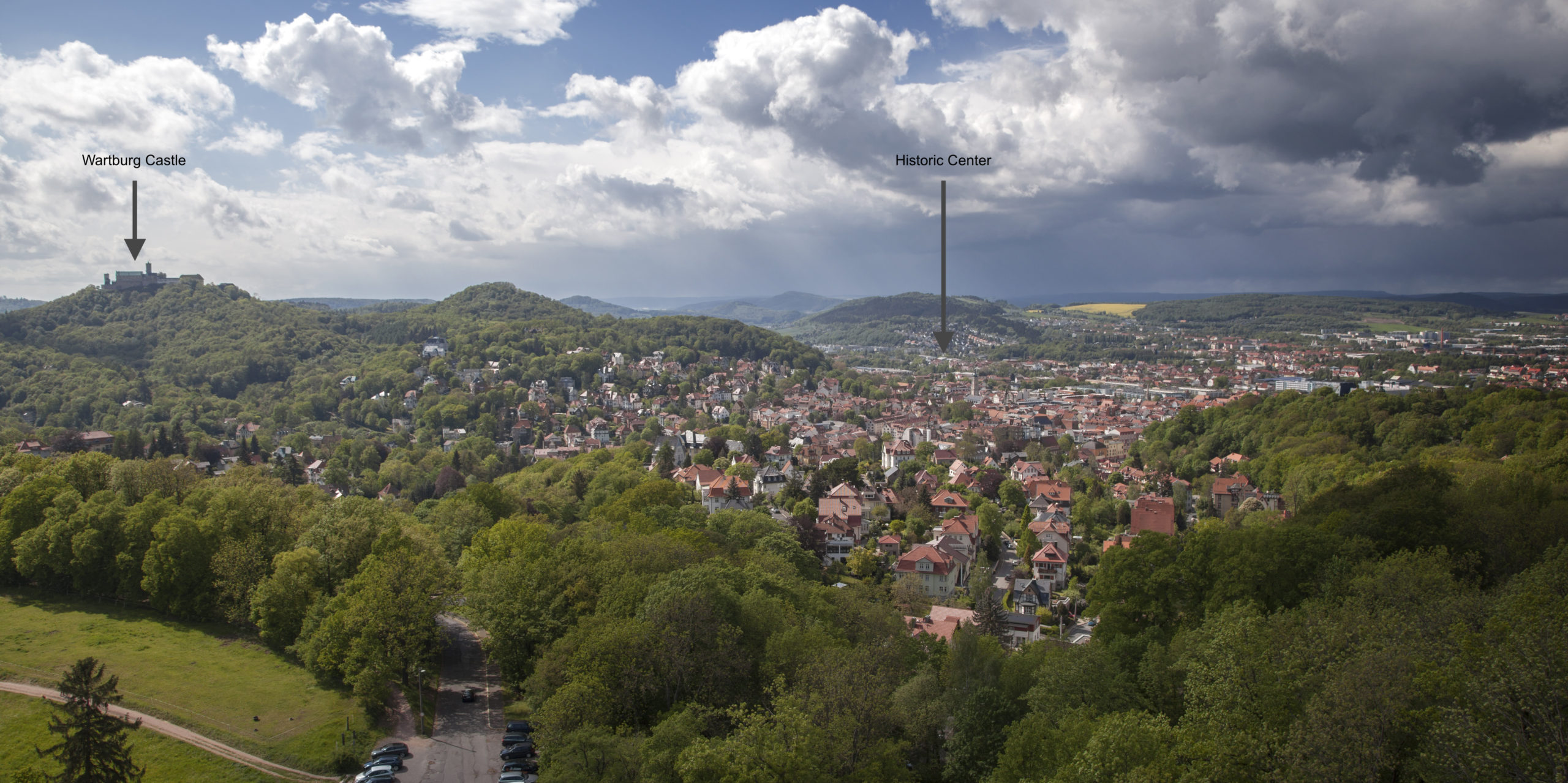Eisenach is a small town located in Thuringia, in central Germany, in the foothills of Thuringian Forest. The city was founded by the landgraves of Thuringia in about 1150. The town is specially known for its UNESCO listed Wartburg Castle which was founded by Ludwig the Springer around 1067. It has been a UNESCO World Heritage Site since 1999. The city is filled with multiple historic structures offering to its visitors picturesque views worth reminiscing. It is also renowned as the city where Martin Luther translated the New Testament, and the home of Johann Sebastian Bach, one the greatest composer in music history.
- Welcome through the Impressive Romanesque basilica – St. Nicholas Church
I visited the city for an excursion arranged as part of the European Heritage Volunteers program in Weimar. We entered the city in a group, walking through the streets leading from Eisenach station towards the St. Nicholas Church, viewing the beautiful cityscape. The Church is a three-nave Romanesque basilica constructed in the 11th century. It served as a monastic church to the Benedictine nuns and a parish church to the people of Eisenach. It was restored in the same style as the Wartburg Castle in the 19th century and was last restored in the year 2015.
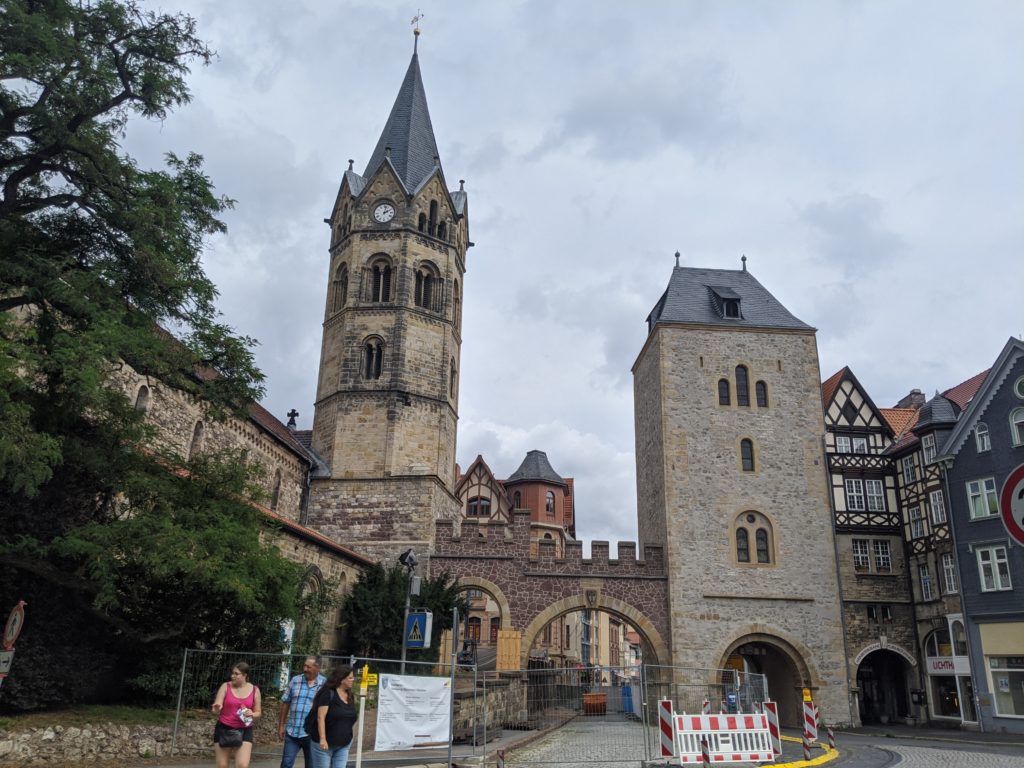
- St. George’s Fountain
As we walked further we reached the historic centre of the city, where a fountain called the Georgsbrunnen or “Gülden-Manns-Brunnen” was built in 1549. It was built to commemorate the city’s saint, St. George.
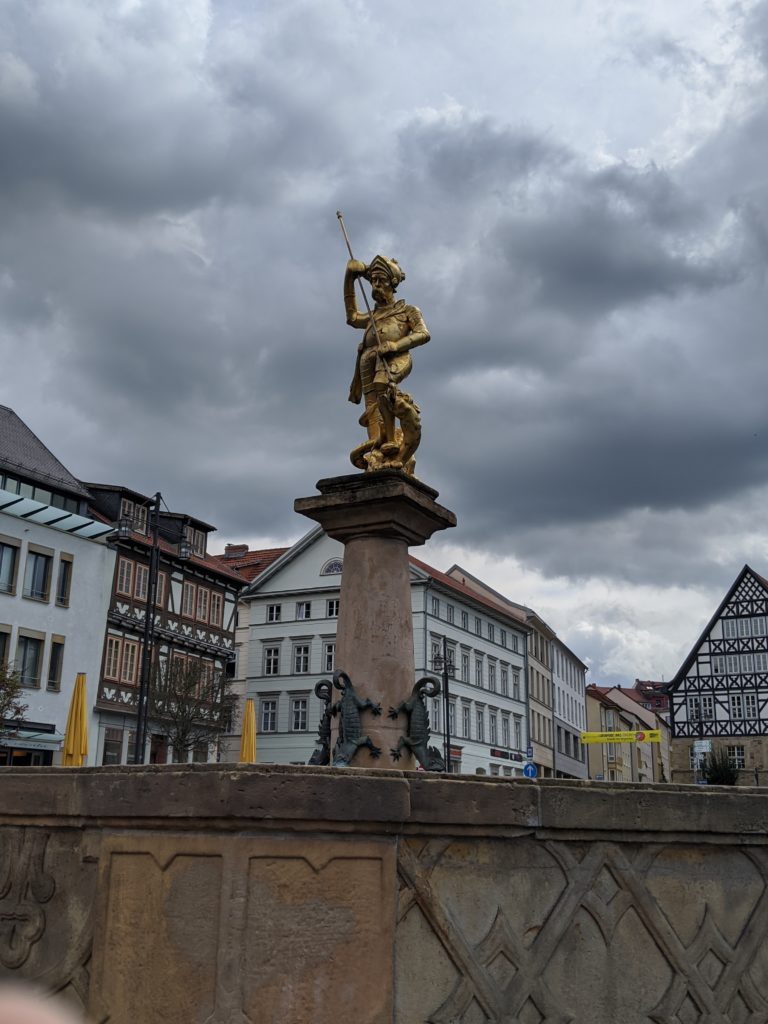
- Eisenach City Palace
On the North of the market square lies the baroque city palace, which was a residence of the Dukes of Saxe-Eisenach. At present, the palace houses the city administration (cultural office), the city archive, Tourist-Information and the Thuringian Museum.
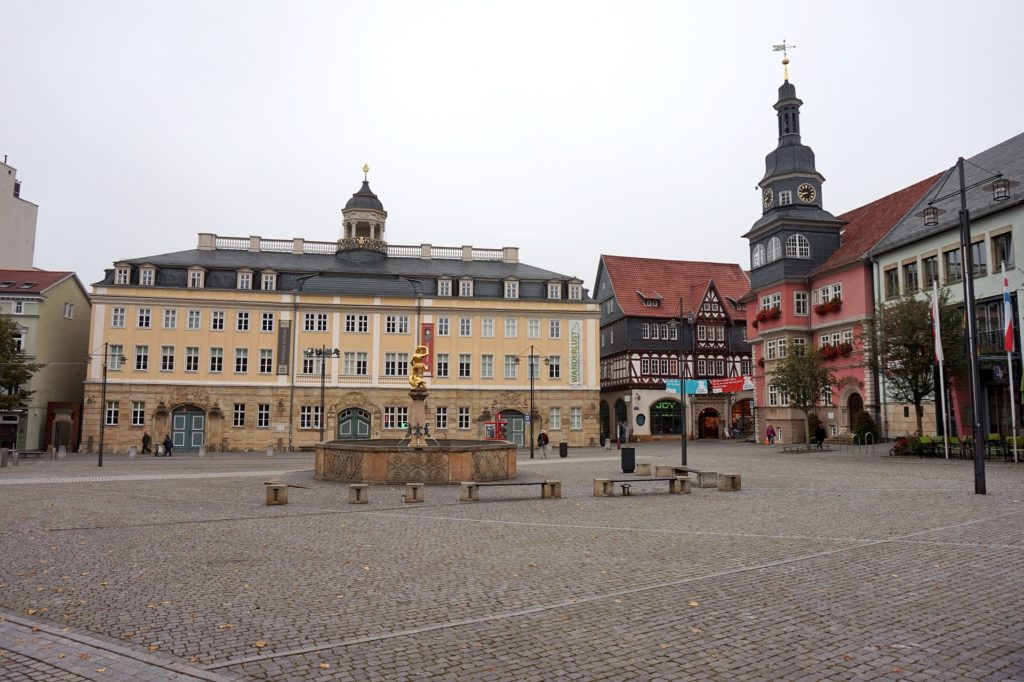
- In Honour of St. Elizabeth
Another 200m North of the City Palace is the Church of St. Elisabeth which is Eisenach’s Catholic parish church. It was built in the neo-Gothic style between 1886 – 1888 (planned by the Kassel architect Hugo Schneider).
- Baptistery of Bach and the Church of Luther
Now as we moved towards the South of the market square, we located the main Protestant church of St. Georgen which was founded at the end of the 12th century by Ludwig III. It is the same Church where Johann Sebastian Bach was baptised in 1503 over the baptismal font which has been preserved and is still existing in the church. It’s also where Martin Luther preached during the Reformation.
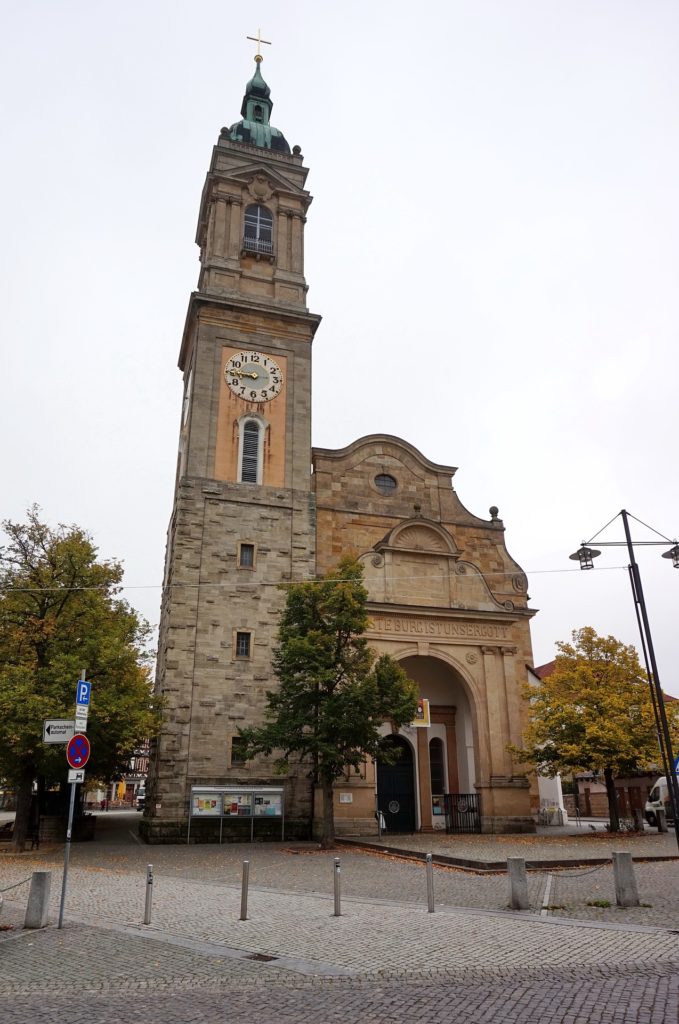
- The Monument to Eisenach’s most famous son – Bach House
Following the trail leading towards the Wartburg Castle, we then saw Bach House. This house where Bach lived, is now a museum showcasing his 250 original exhibits. The house is a 550 year old half timber structure which was earlier in two parts. The house since 1907 is marvelled for its amazing collection on Bach’s life and his music.
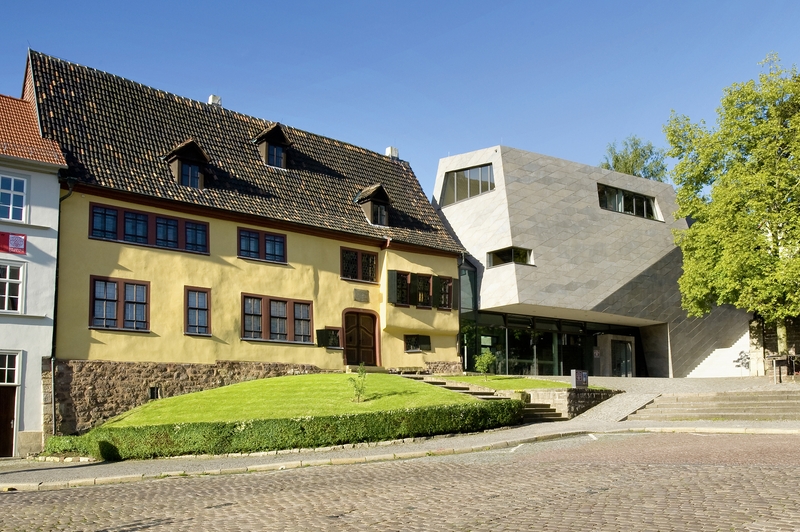
- “My dearest city” Eisenach, The museum for the famous reformer – Luther house
The Luther house is one of the oldest and most beautiful half-timbered houses in Thuringia. Martin Luther is said to have spent the formative years of his school with the Cotta family. The museum now showcases him as a student, reform and bible translator.
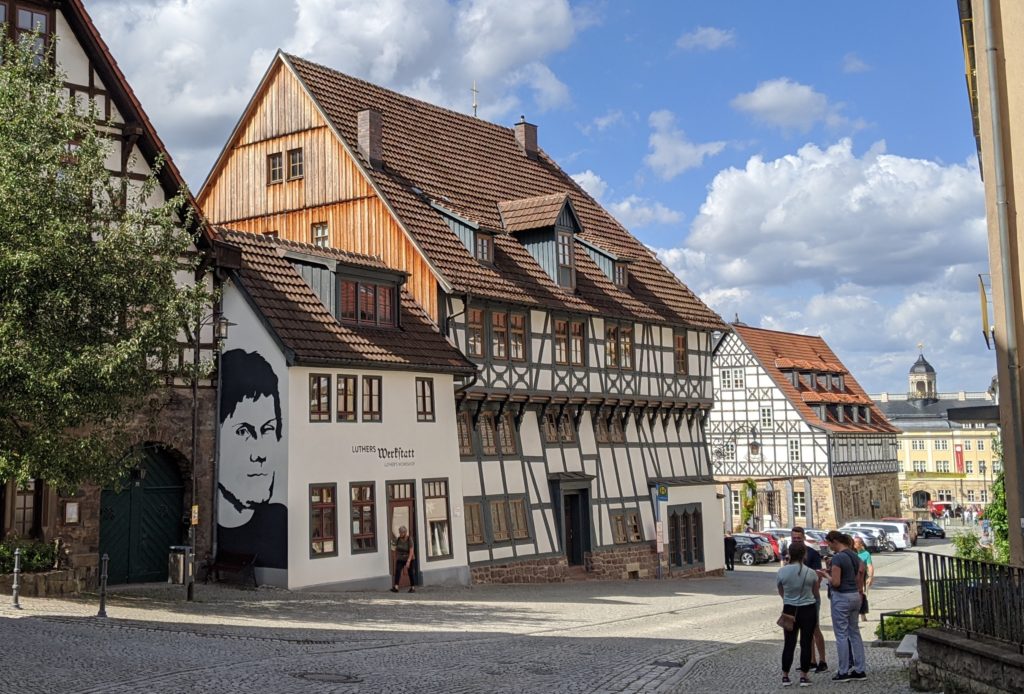
- The Wartburg, famous scene of world history
Following the trail now we left the city centre behind and began the ascent towards the Wartburg Castle. This 1000 year old castle has been a World Heritage site. With its lush decorated chambers, it is also one of the most famous German Castle. It had been a residence of Elizabeth of Hungry after the 12th century. It is said that this castle influenced Luther to translate the New Testament. Although most of the outer castle grounds are free to explore, one needs to buy a ticket to view the interiors as well as climb the tower.
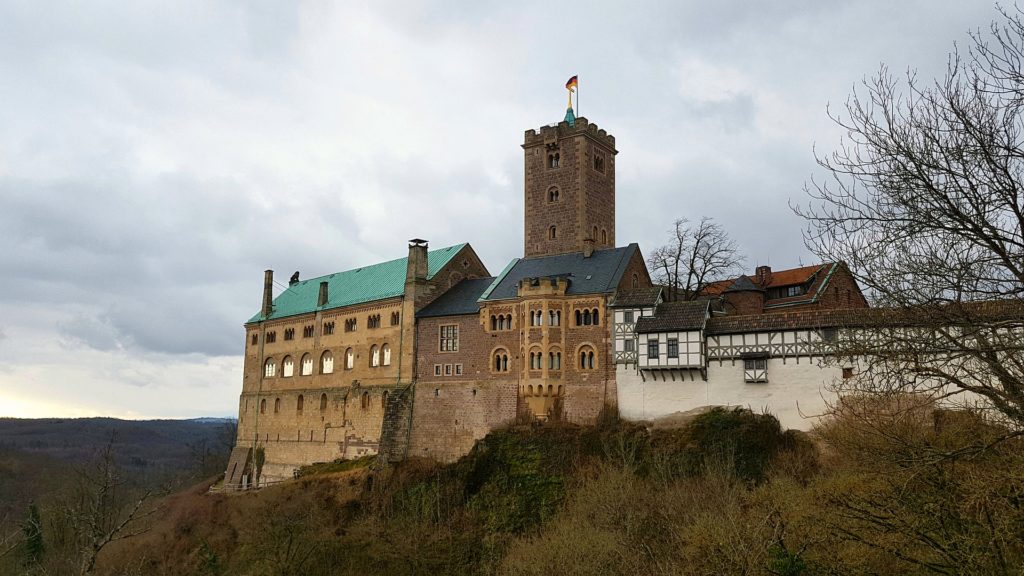
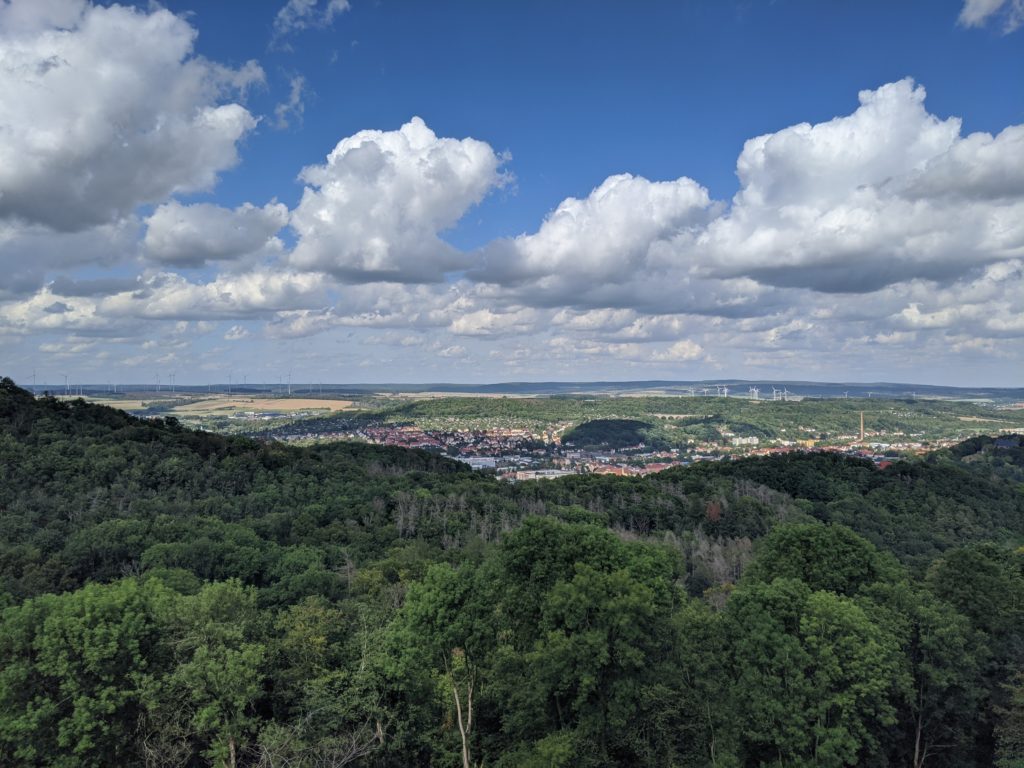
Huffing and puffing due to a slightly steep ascent as we approached the Castle enjoying the view, the end of our tour came nearer! A tour filled with all the beautiful marvels the city had to offer, it was a narrative which closed with emotion of wonder, beauty and satisfaction!
XXXXXXXXXXXXXXXXX